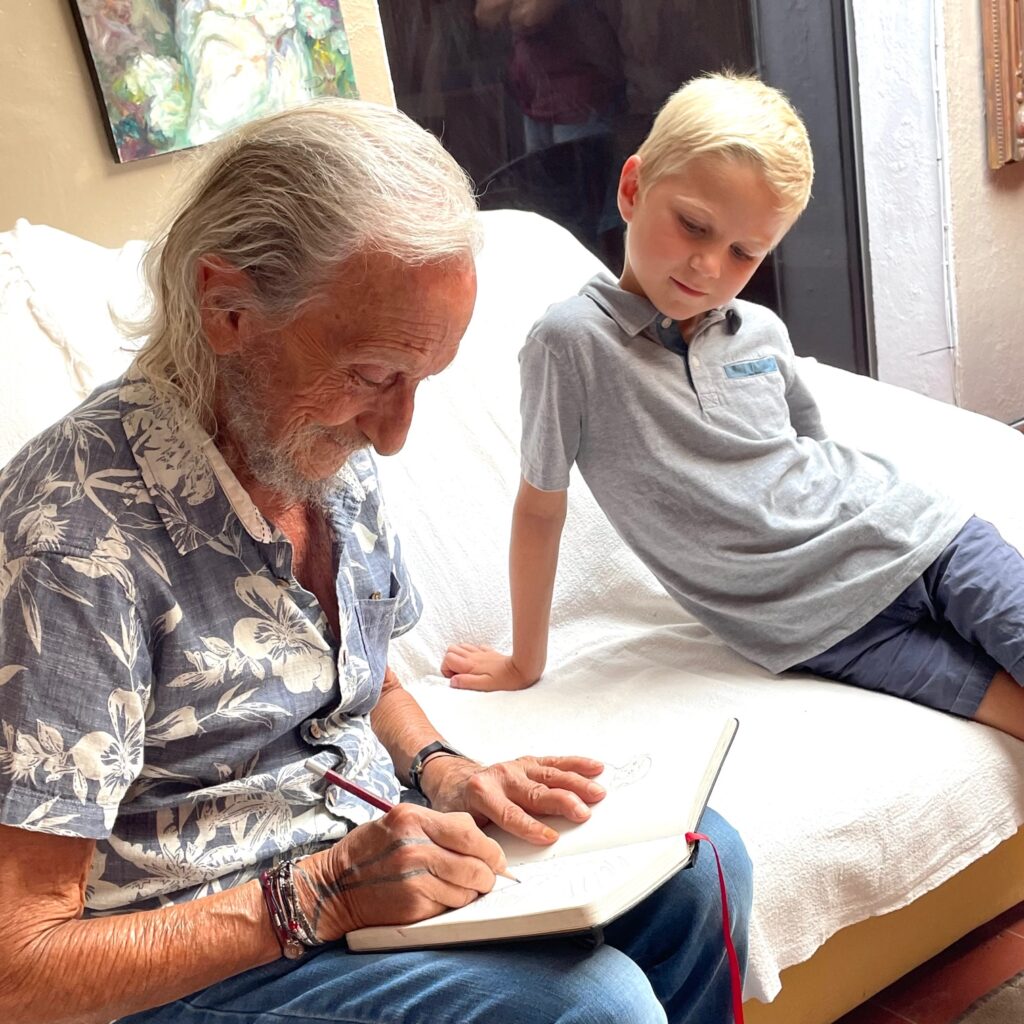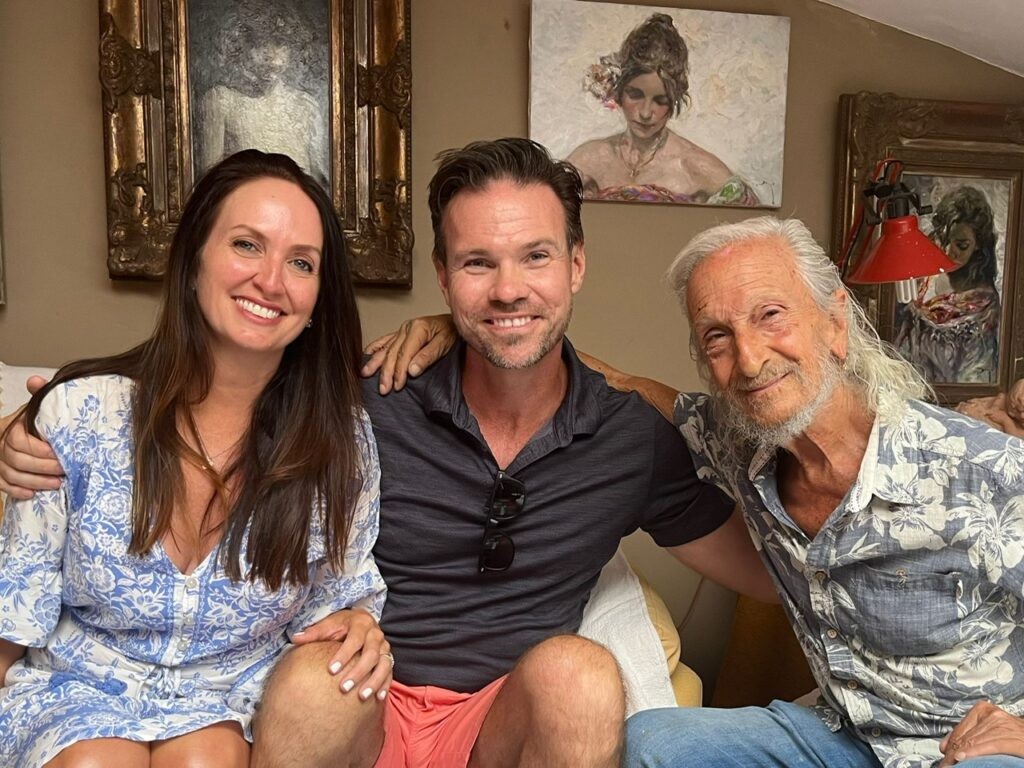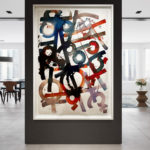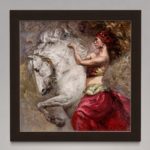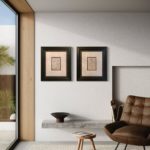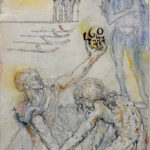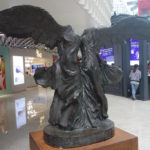By Kat Barrow-Horth, for Robin Rile Fine Art
The dusty hillside town of Vilamarxant, Spain has a small, somewhat hidden dirt road weaving through an old grove of twisted olive trees. It is an unassuming landscape, unmistakably Spanish and dotted with simple dwellings stacked amongst arid terrain. As the road winds beneath a canopy of trees our car comes to a stop at an unmarked compound of high and windowless walls. There is no indication of the hidden sanctuary which lies beyond. The sprawling home belongs to Spanish artist Jose “Pepe” Royo, recognized around the world as one of the leading Contemporary Spanish Impressionists and master of the female form. For decades the artist has enjoyed international acclaim, created thousands of works of art, been the subject of dozens of exhibitions, been featured in the news and magazines and has piles of glossy books which read “Royo” in bold print across the cover. By all intents and purposes, he is the very definition of a successful artist. But, today when we meet him in his home, he is simply… Pepe.
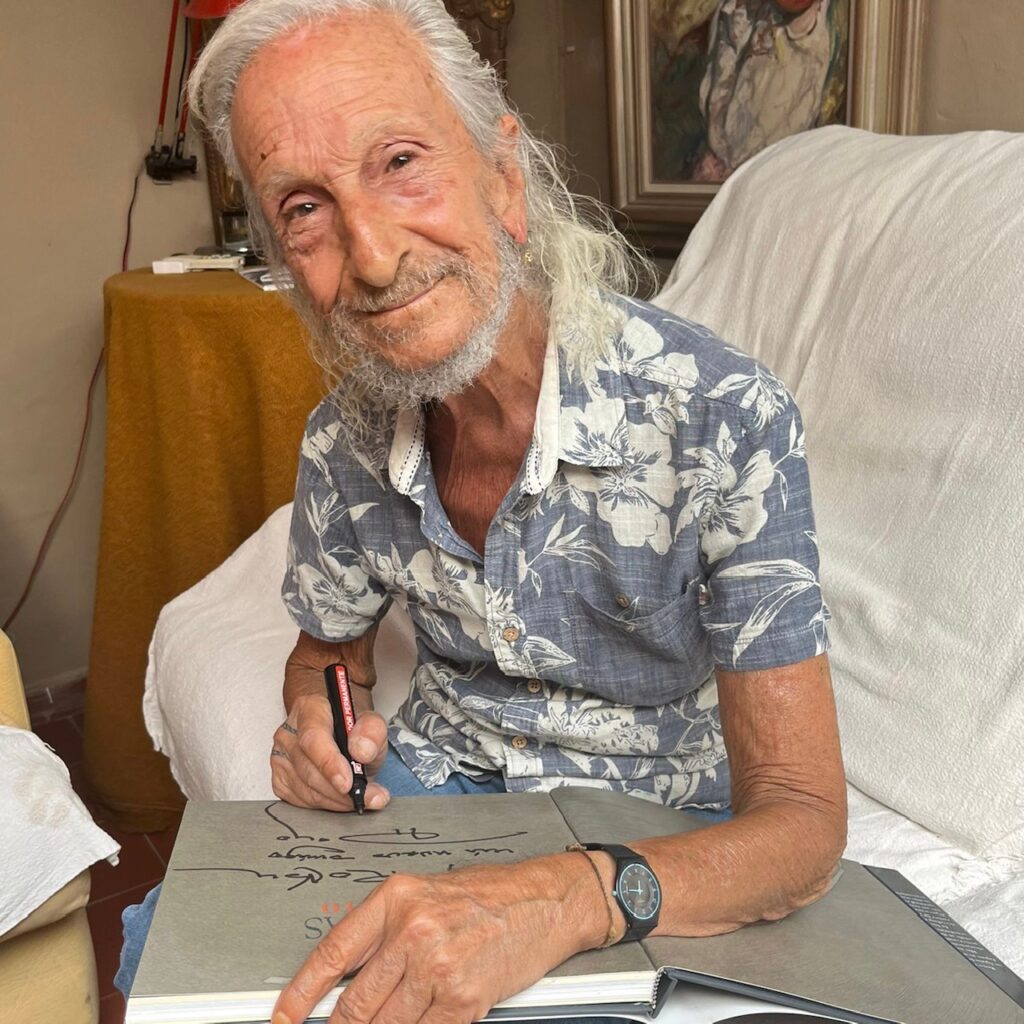
Royo greets us in one of several large galleries which have been built around his property over the course of forty years. He is small and slender with half-moon eyes and long, gray curly hair. He receives us with a soft handshake and smile, chuckling in relief upon learning que la conversación estaría en su Castellano nativo (that our conversation would be in his native Spanish). The artist is disarmingly genteel. On his left wrist, a simple black watch and on his right, the tattoo of a small rope loops around his hand and middle finger. He walks carefully with his cane. Alongside him is his only child Lucía, a pixiesque vision with large brown eyes and a familiar face, as she has served as one of his models since she was a child. The mother of a young child herself, Lucía has an infectious energy and watches her father carefully and adoringly. She enjoys his presence and takes his photos often. It is clear that this is a family enveloped in love.
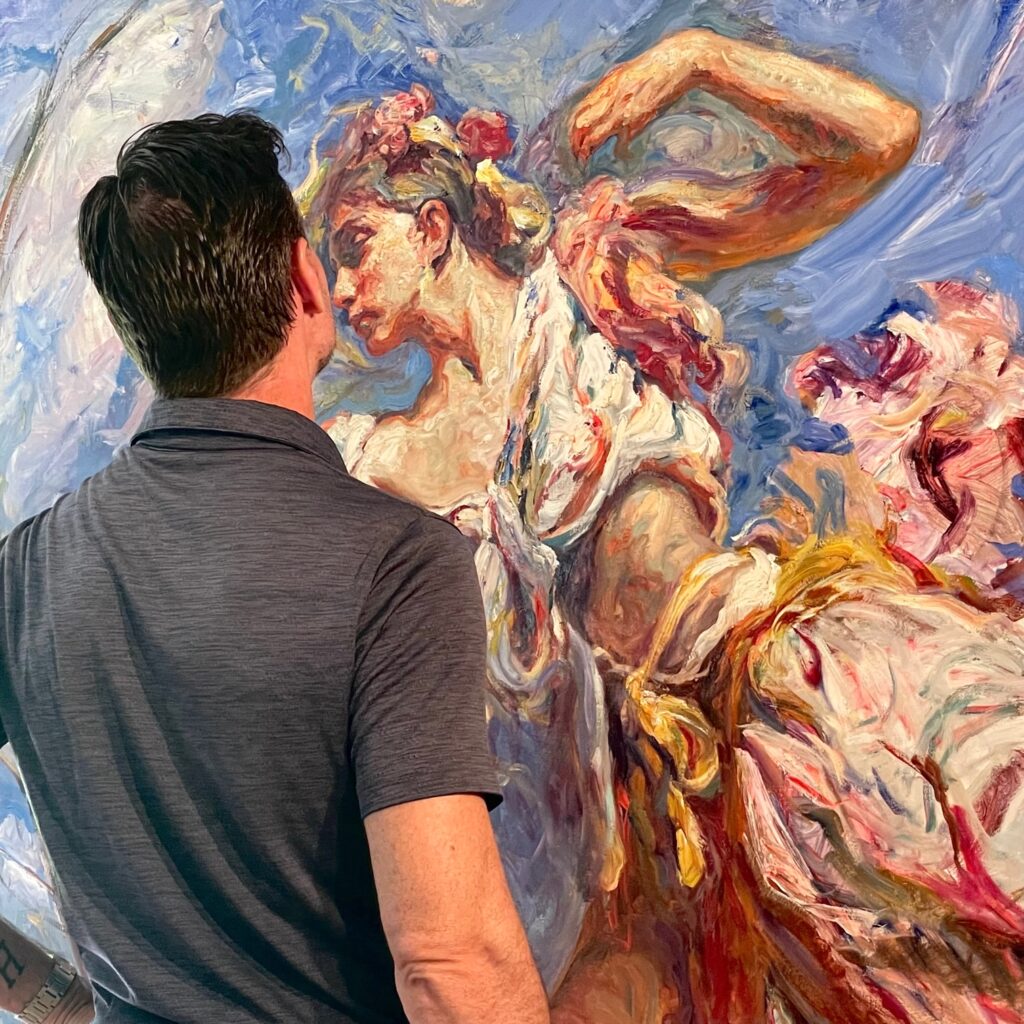
Royo gently guides us through his permanent collection of over twenty large-scale female portraits and a room of mythical “Sagittas” paintings evoking Romanesque power, with their arching bows and flowing robes. Swirling, bright colors amass on canvases alongside tranquil gardens filled with impastoed flowers. Traces of the distinct Spanish light of his homeland can be found throughout the works, even those bathed in shadow. Royo was raised in a medical family, yet was an artist from birth. Thankfully, he had the fortune of having parents who recognized his talent early and supported his craft, giving him the means to pursue the arts. Something he readily admits was rare at the time. The artist spoke of his family fondly, being one of four children and the only boy among three sisters. From his art it is clear he has a unique understanding of women.
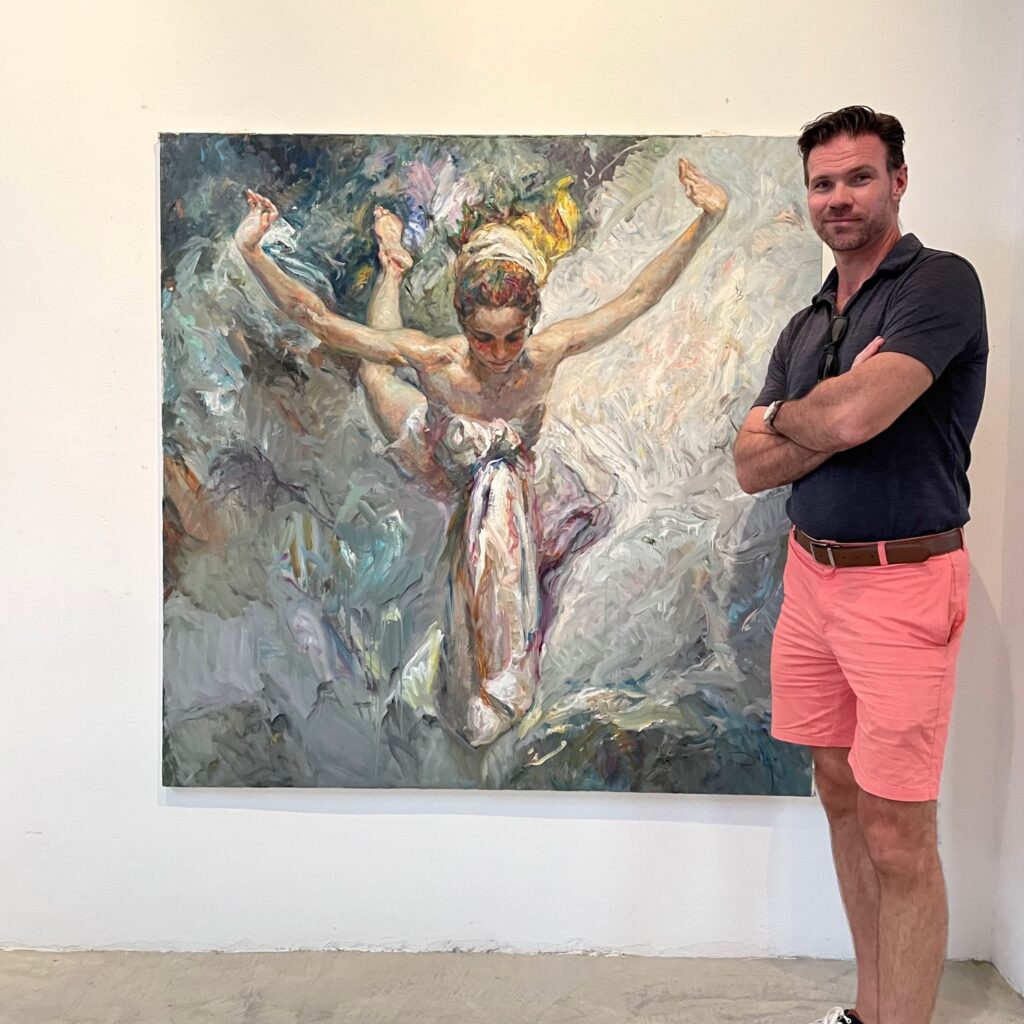
When Jose Royo paints, he becomes enraptured with a theme and produces a volume of work around it. While some of his themes are tranquil gardens, lazy seaside promenades and quiet afternoons reading in the shade, others depict the tempestuous coastal winds, gravity-defying women suspended mid-air and mythical goddesses drawing their bows taught. “Sagittas” being the arrow and “Sagittario” the archer. These themes repeat in endless variations and complexities, and he took the long Covid months of being sequestered in his studio to reimagine themes and work on ways to improve upon them.
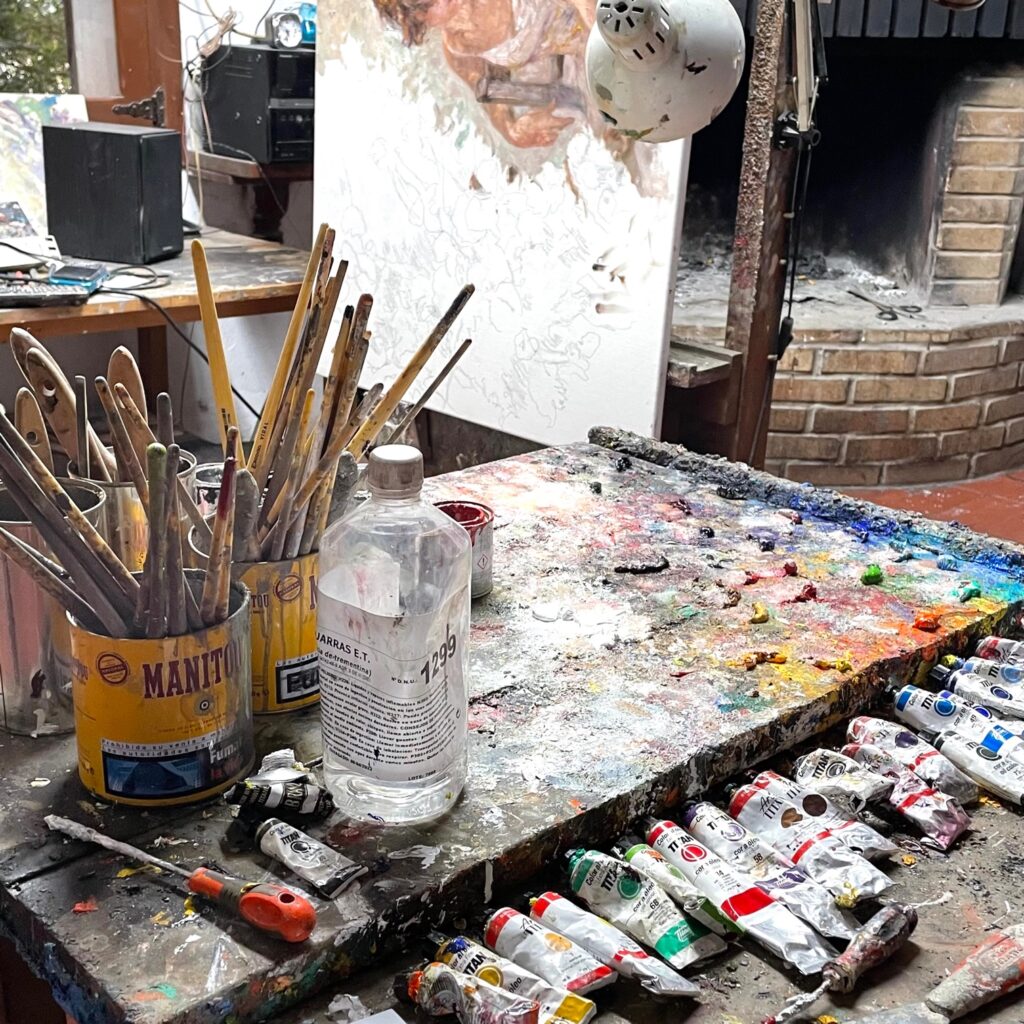
As we continue to tour the house and grounds, trailing over pathways lined with trees, up and down stone steps, we are met by the artist’s three rescue dogs Noé, Beca and Teo. They are notably trusting of strangers, wagging their tails in unison and lapping our son Ronan’s face with abundant slobbery kisses. Contented dogs living in a peaceful and private sanctuary, they trail behind us lazily as we continue into the artist’s painting studio. Compared to the grander spaces in the house and galleries with high ceilings and expansive windows, the studio is relatively small. It has become a quip as we tour the house how frequently we have to duck our heads upon entering rooms due to low door frames and the ongoing joke in Spain that with our long-limbs we are “gente del norte” (people from the north). In the artist’s studio, a door frame has been cut to fit larger paintings through. Upon the easel is a half-finished painting, a semi-raw canvas with a figure half-complete and the rest sketched in pencil. A large paint-laden palette to the right is covered by the artist’s ephemera: brushes, tubes of paint and a scraper which he periodically uses to clean the palette. Royo motions to a small mirror on the wall hanging behind where he sits when he paints. He tells us that as he paints he frequently checks the mirror behind him as an artist’s eyes become accustomed to looking at things a certain way for too long. The flipped reflection helps him check for accuracy, perspective. “Pintas mucho, todavia?” we ask, to gauge how often the artist still paints. “Cada dia” he answers, every day. “Y escuchas música?” we ask, wondering if he prefers silence or music when he paints. “O, si” he says, he loves every kind but particularly music from the 80’s. In the end, the artist is a fan of Queen and The Rolling Stones. Aren’t we all?
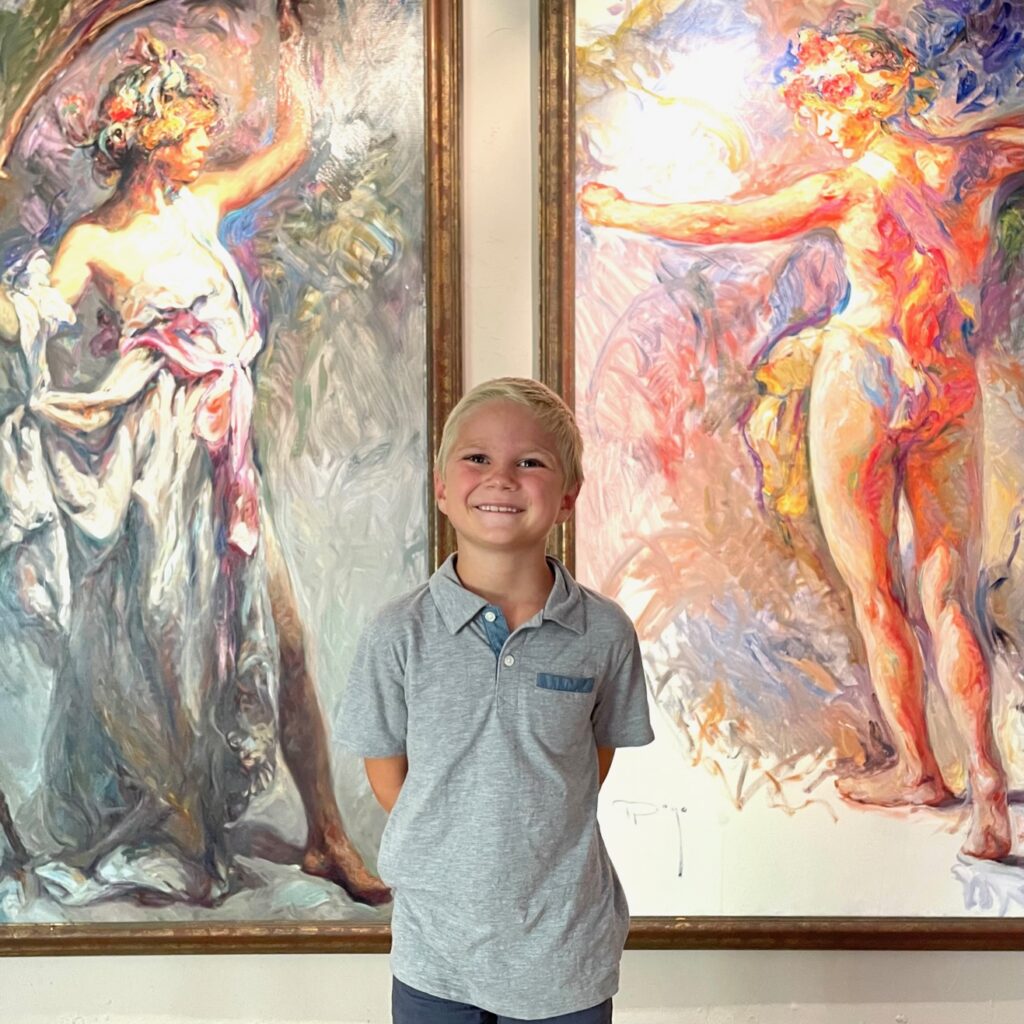
We briefly visited the inside of his home, with terracotta floors and large windows with views of the garden. An eclectic mix of furniture and art show a collection of items which have been curated by their family in the decades of which they have added to the house. On a wall full of framed artworks of different styles, we asked about one small sketch in particular. It was by Royo’s favorite art professor, he explained, and there it hung in a place of honor decades after it was sketched. His daughter Lucia explained how the house has grown organically and exponentially over the past forty years. “Es una bonita historia..en principio era muy pequeña, apenas una habitación. No tenía luz ni agua ni teléfono. A lo largo de 40 años, la casa se ha ido transformado y ampliado. Podemos decir que la casa ha estado siempre en transformación.” The house had transformed since the 1970’s from a simple room and terrace without the basics of light, water or phones to a property staggered with studios, galleries and dwellings. Like the artist’s oeuvre, the home continued to grow and morph, transforming to meet the needs of their small, yet intimate family.
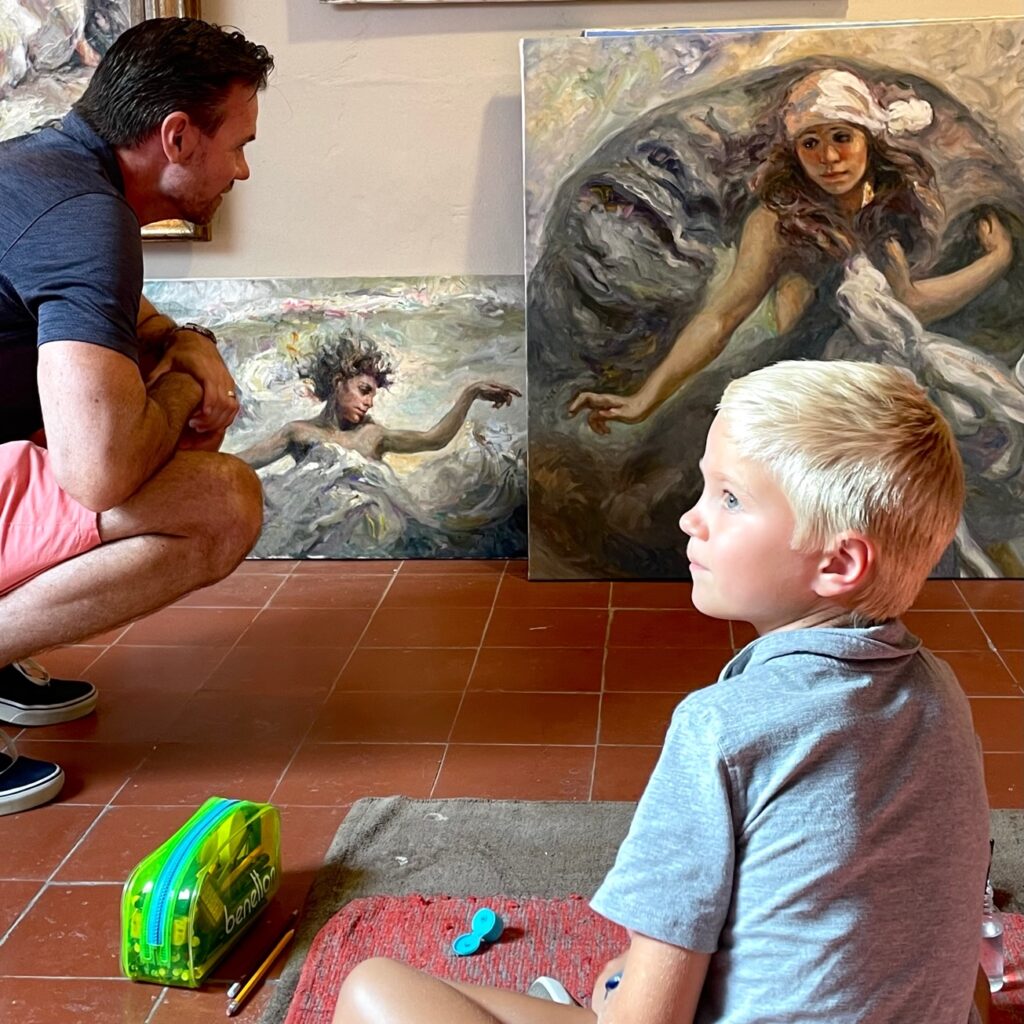
Royo’s wife and Lucia’s mother Margarita, also an artist, was notably absent the day of our visit. She was spoken of often and her likeness was seen in paintings all around the property, having sat as a model for her husband on many occasions. With the petite body of a dancer, Margarita swept Jose off his feet the moment he met her, over 50 years ago. She was dressed all in white, he explained, even down to her white gloves. The young Jose, on the other hand, was a mess covered from head to toe in paint. He knew in an instant they would make a good pair. “No hay nada mejor que el amor” he beamed. There is nothing better than love. This is a man who is still very much in love with his wife.
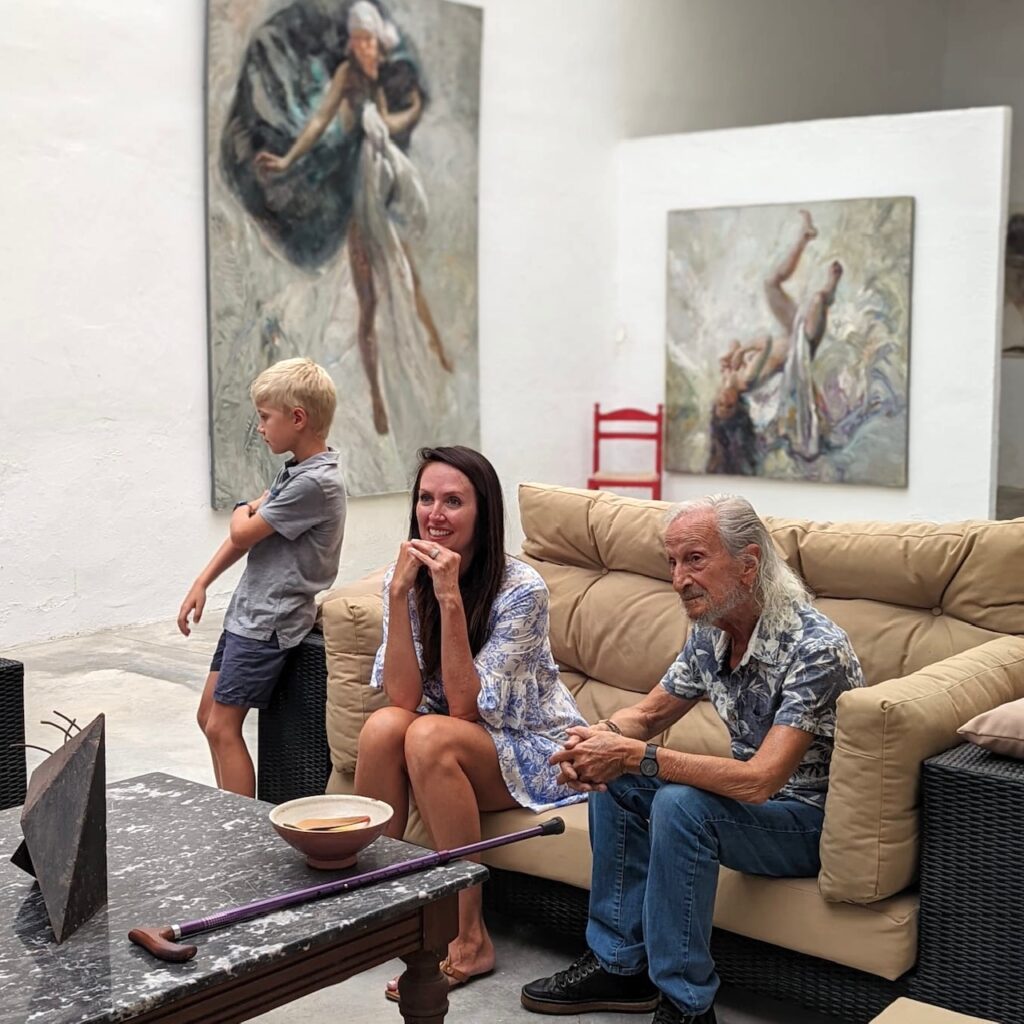
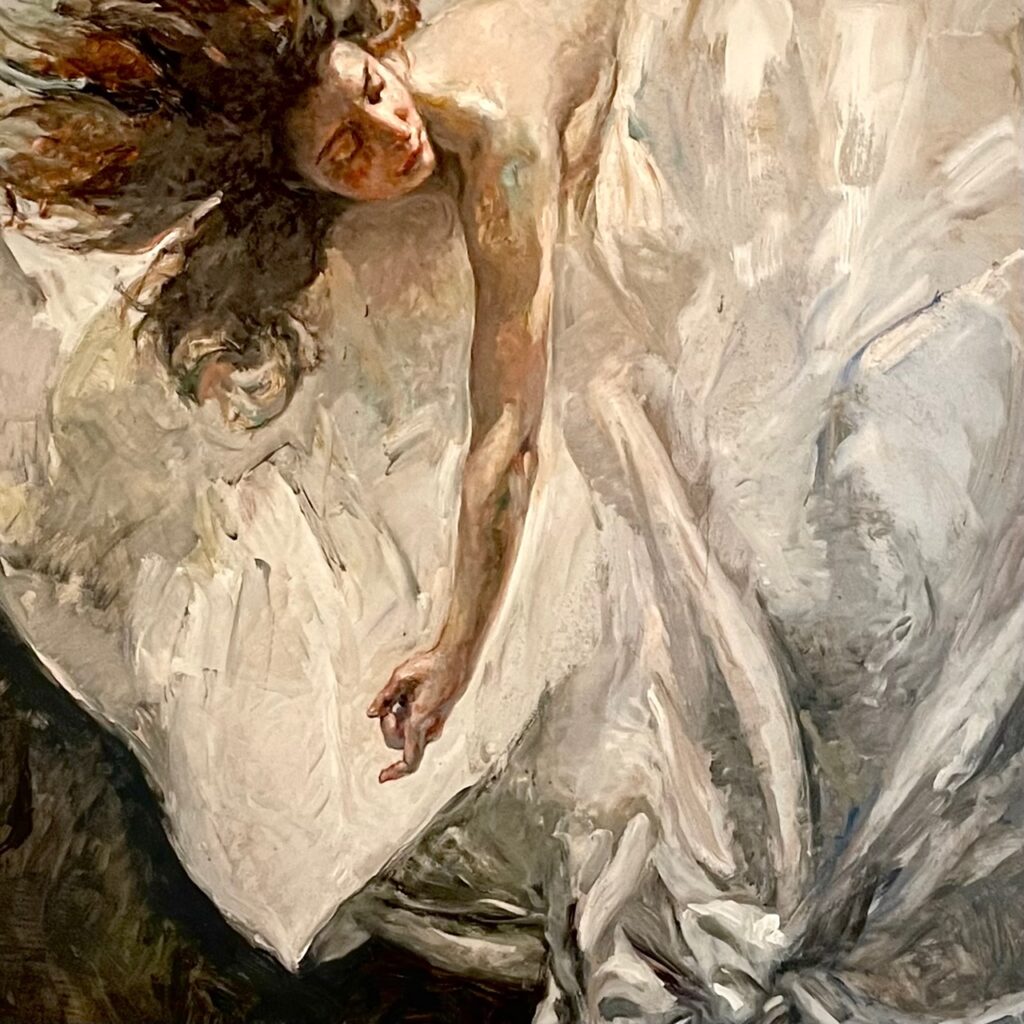
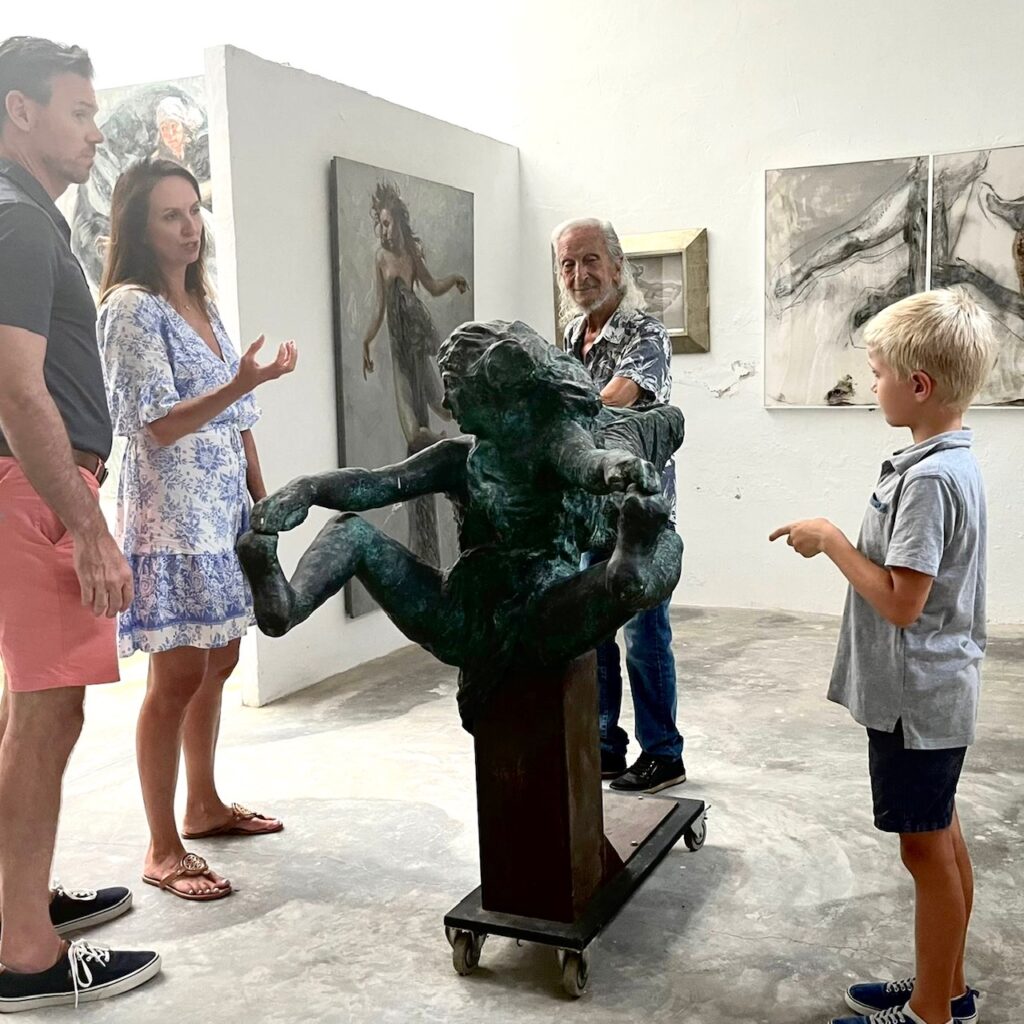
Our last stop touring the artist’s sanctuary was a large white gallery space with high walls and a retracting shade ceiling which opened to wash the gallery in natural sunlight. The walls were covered with large, primarily monochromatic paintings of figures suspended as if weightless in an amorphic background. Conceptualized roughly 15 years ago, Jose Royo’s “Ingravidos” series has been one of the artist’s most successful. They are a departure from his colorful pastoral scenes of elegantly dressed women communing with nature. The “Ingravidos” (“Weightless”) are a combination of Classicism and Modernism, soft figures delicately contorted in various positions as if floating, rising or falling with fingers poised on balletic hands, feet bare, bodies twisting. Developed and actualized in the very room in which we stood, the series was clearly fun for the whole family to create. The models varied from lifelong family friends to dancers, all of whom the artist previously knew. A redheaded figure floating weightless is Raquel, the local town baker’s daughter. Royo’s daughter Lucia explained that they were harnessed and suspended, a fan blowing their hair as Royo feverishly sketched to find the body’s perfect position for the painting. She herself served as one of the models, to which she laughed. The harness, it appears, made for a rather uncomfortable next day. Being in a room surrounded by the artworks was breathtaking. Perhaps Royo’s “Ingravidos” series has resonated with art collectors so much because one can not help but pause to study them. They’re beautiful, breathless. A client of ours recently hung one in her home and wrote to us thrilled “My mother was mesmerized for an hour or more pointing out what she sees in the painting. That alone was worth the purchase.”
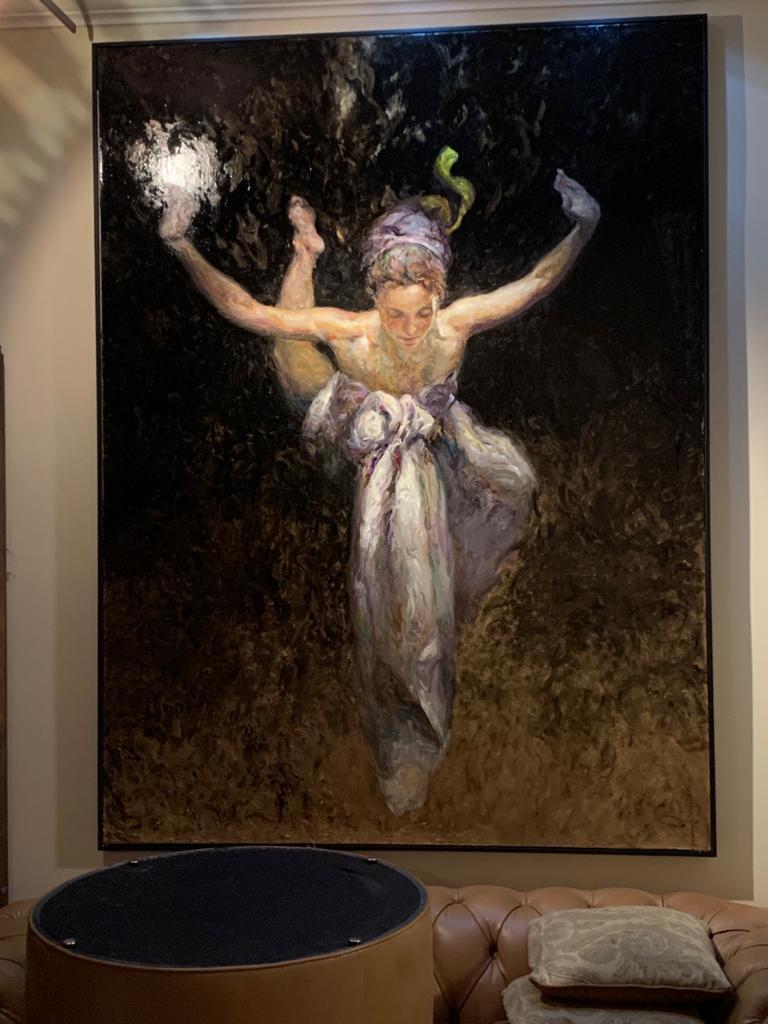
As afternoon turned to dusk, it was time for the artist to retire and for us to return back to Valencia, a forty five minute drive from Royo’s home and studio. We had been in Spain for nearly six weeks and those few hours spent with Pepe and his daughter on a warm Tuesday afternoon was one of the favorite moments of our trip. He signed books for us, and for our precocious son Ronan, who has been collecting art books on Picasso, Miro and Dali during our travels. Ronan sat on the floor of the studio with a small black sketchbook recreating one of Royo’s paintings when the artist called him over. The two sat together on the couch. Jose “Pepe” Royo, who has lived a grand life built upon layers of love, following his artistic passions and creating beauty where there was none, and the other, a nubile artist at the very beginning of his life in the arts. As parents and purveyors of art, it was a moment that was singular… As if suspended in time. We watched them communicating together silently, while tears blurred our eyes. The language was Art and they both instinctively understood each other. Now, in Ronan’s sketchbook now is a pencil drawing of a soft female figure pensively looking down, the bottom signed by Pepe. “A Ronan. Mi nuevo Amigo” it reads,
“To Ronan. My new friend”.
